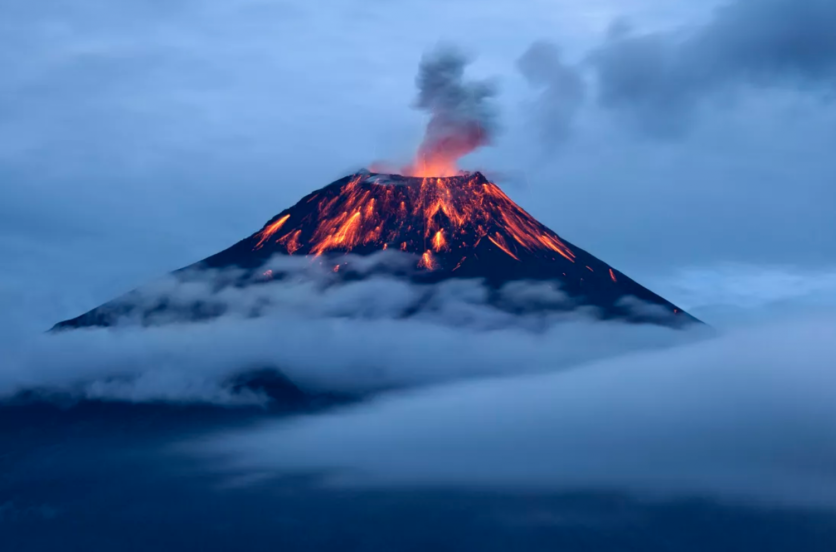
While a study shows that one of South America's most prominent volcanoes shows signs of a possible collapse, the researchers said Ecuador's Tungurahua volcano might remain stable.
Tungurahua volcano in Ecuador - known regionally as "The Black Giant" - is displaying the hallmarks of flank instability, which could bring about a tremendous landslide.
That said, the researchers underscored that their research isn't a prediction of certain doom. If anything is seen, the findings could help the researchers reveal those processes, and they could anticipate beforehand of time what future situations may trigger a catastrophe.
ALSO READ : LOOK: Massive Volcano Eruption Seen From Space
Continuous magma discharge could cause 'stress' to volcano, but...
New research, led by Dr. James Hickey from the Camborne School of Mines, said that the volcano's recent activity has led to substantial rapid deformation at the western flank.
"Magma discharge is one among a few things that can cause or contribute to volcanic flank instability," Dr. Hickey said. While there is a hazard of feasible flank falls apart, the lead researcher said the uncertainty of these natural systems additionally means it may remain to be stable. However, Hickey said the Tungurahua's volcanic activity is undoubtedly one to keep an eye on in the future.
The new studies have proven that this deformation may be explained by using shallow, brief magma storage below the west flank. If this magma discharge is continued, the sheer extent can cause stress to accumulate in the volcanic cone - and so promote new instability of the west flank and its possible collapse.
Volcanic activity led to 'substantial rapid deformation'
The researchers agree that the driving force causing this deformation could lead to an increased chance of the flank collapsing, inflicting enormous harm to the nearby encompassing area.
The research, published in Earth & Planetary Science Letters, recommends the volcano need to be closely monitored to watch for stronger early warning symptoms of potential collapse.
Scientists saw 'imbalances' in volcano's magma
Dr. Hickey, who is based in the University of Exeter's Penryn Campus, Cornwall, said they had discovered a quick deformation of Tungurahua's west flank.
"Our research suggests [that the defomation] is due to imbalances between magma being provided and magma being erupted," he added.
ALSO READ : Formation Of Volcano Under The Indian Ocean Causes Strange Hum Heard All Over The Planet
Tungurahua's notorious downfall
Tungurahua volcano has a long record of flank falling apart and has also been regularly active since 1999. The eruption since 1999 caused the evacuation of 25,000 people from close by communities.
A previous eruption of Tungurahua, around 3,000 years ago, triggered a prior, partial crumble of the west flank of the volcanic cone.
The collapse caused a widely unfolded avalanche of shifting rock, soil, snow, and water that blanketed 80 square kilometers (30.9 square miles) - or as large as 11,000 soccer fields.
Since then, the volcano has gradually been rebuilt over time, peaking with a steep-sided cone more than 5000 meters in height.
However, the new west side has proven repeated symptoms of fast deformation while the other sides remain stable.
![Apple Watch Series 10 [GPS 42mm]](https://d.techtimes.com/en/full/453899/apple-watch-series-10-gps-42mm.jpg?w=184&h=103&f=9fb3c2ea2db928c663d1d2eadbcb3e52)



